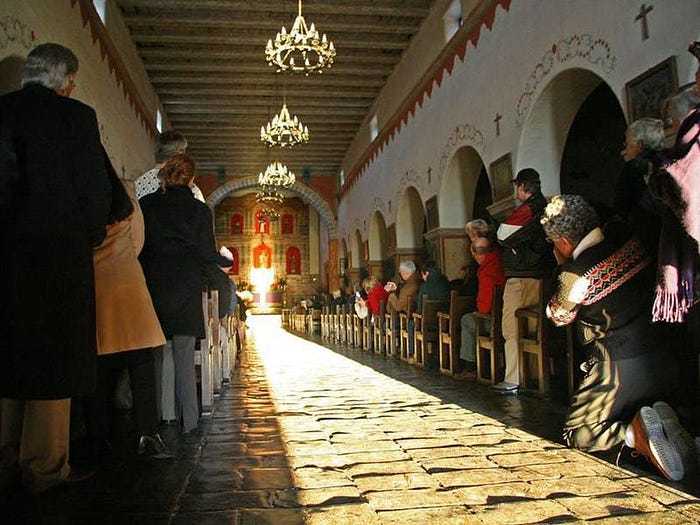sacred solstice season
I found this interesting article in the Smithsonian magazine on How the Sun Illuminates Spanish Missions in the Winter Solstice.

We have a Catholic tradition back in the Philippines called visita iglesia where during Holy Week we trek to churches — new and old — reciting the Stations of the Cross. All these church visits bring on fond memories.
As folks in the Northern Hemisphere mark the longest night and shortest day of the year this winter solstice, I cannot help but contemplate the effects of colonization — then and now, here and there.
As a product of Spain’s interference in the Philippines I was born on a little backwater island with grand pretensions of its hierarchy and import in our society.
Spawn to and raised by a Chinese Taoist mestiza mother and a Spanish Catholic mestizo father who valued education since theirs was rudely interrupted by World War II and the Japanese occupation — we were all sent to the best and most expensive schools on the island.
All four daughters named Maria, plus some saint’s or queen’s name added to distinguish us, were schooled in a Benedictine all girls academy by strict German Scholastican nuns. The two youngest boys went to an all male campus for a Lasallian education.
Thus even if our minimal religious practice at home were bedtime prayers and Sunday mass, the church figured in much of our social calendar and every phase of our lives. Choir practice. First Fridays. Holy Week. Yearly retreats. Baptisms. Confirmations. First Communion. Weddings. Funerals.
In the northern hemisphere, in hundreds maybe even thousands of missions stretching from northern California to Peru, the winter solstice sun triggers an extraordinarily rare and fascinating event.
Miraculous as this appears it was designed intentionally by the scheming church curia to ease themselves more thoroughly into local lives.
It is striking to see how the Franciscan clergy were able to site and design structures that would produce illuminations, but an even more interesting question is why they did so.
Much of our local animistic indigenous faiths revolved around the natural rhythms and cycles of the earth and our cosmos. Conquerors and the Church were quick to replace native gods with their Son of God to divert our devotion in their direction.
The friars reinforced this idea via teachings about the cristo helios, or “solar Christ” of early Roman Christianity. As they built their churches on many pre-existing sacred sites where local folk already congregated for their rituals and ceremonies.
At no time was the sun in the church more powerful than on that day each year, when the birth of Christ signaled the birth of hope and the coming of new light into the world. ~ Rubén G. Mendoza
Originally published at http://changewarrior.blogspot.com.
